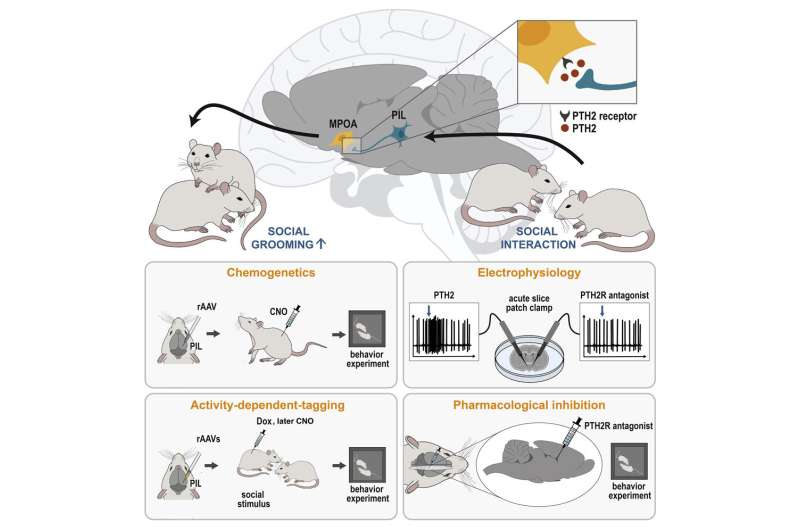September 16, 2022 report
Researchers find neuronal pathway in rats that drives social grooming

A team of researchers affiliated with multiple institutions in Hungary, working with two colleagues from Spain and one each from the U.S. and Germany, has discovered the neuronal pathway in the rat brain that is responsible for social grooming. In their paper published in the journal Current Biology, the group describes using injections and whole cell patch recording techniques to capture brain activity in test rats engaging in social grooming.
Many animals participate in social grooming, which is loosely defined as non-sexual physical contact conducted as part of associations between members of a group—hugging or patting among people, for example, or simply touching or grooming in other animals. Brain scientists have suspected that there are certain parts of the brain that play a role in such activities.
To find the brain regions responsible for social grooming in rats, the researchers used cell patch recording to capture brain activity during instances of social grooming. The technology provides a way to measure cell membrane currents in living animals. It is conducted using patch clamps. The animals used in the test were allowed to roam freely in a penned open field both before and during the experiments. In this scenario, the rats engaged naturally in social grooming with one another.
In analyzing recordings made of pairs of female rats engaged in social grooming, the researchers found two main brain areas became active, the medial preoptic area (MPOA) and the posterior intralaminar thalamic nucleus (PIL), located within the thalamus and hypothalamus. The researchers found that they could also force both areas to become active using chemical enhancements, which led to increased social grooming.
The researchers found that neurons from both regions expressed a hormone called neuropeptide parathyroid, which was released into the surrounding thalamus and hypothalamus, respectively. They also found that dulling the neurons in the region led to reduced social grooming. The group concluded their work by looking for and finding possible analogs of the MPOA and PIL in humans.
More information: Dávid Keller et al, A thalamo-preoptic pathway promotes social grooming in rodents, Current Biology (2022). DOI: 10.1016/j.cub.2022.08.062
Journal information: Current Biology
© 2022 Science X Network



















